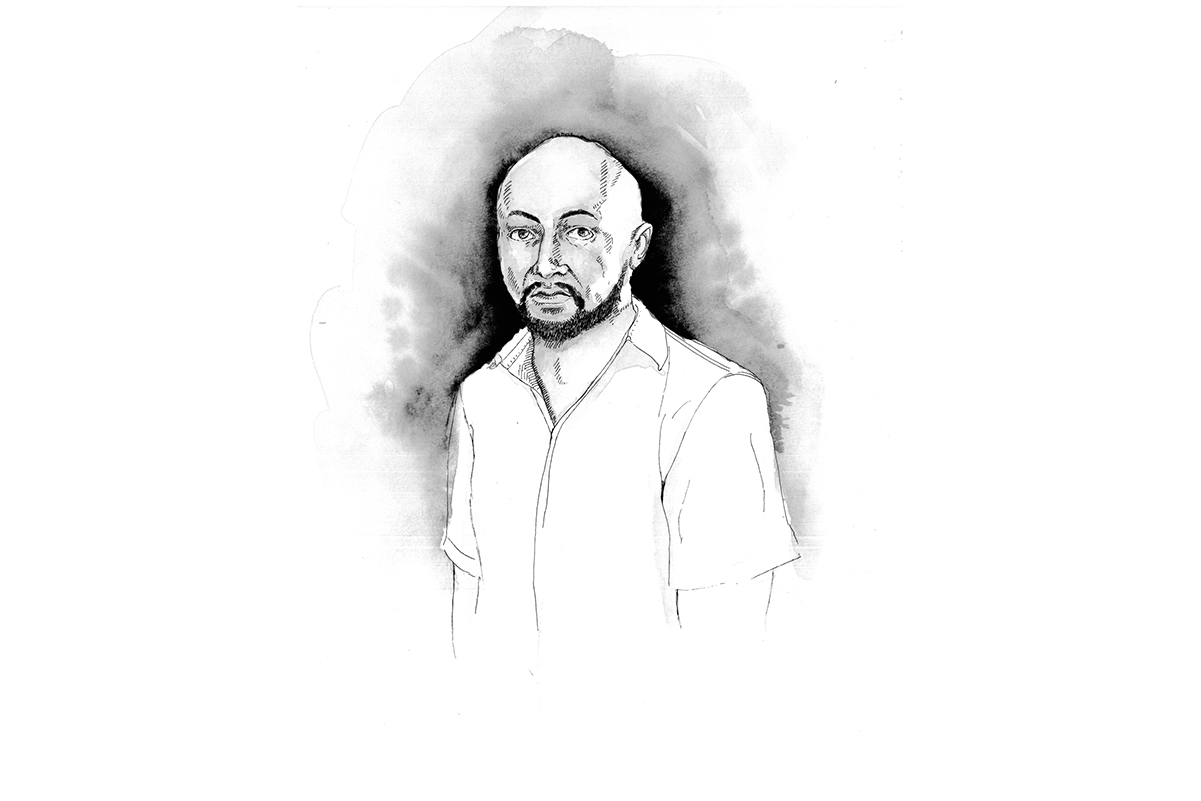
Pietro Frediani’s experience as a refugee comes through his paintings. One of them shows a woman, looking worried, between a pleasant landscape and a series of fires.
“She’s lonely without a husband,” said Frediani, who was born in Eritrea. “She’s in between hope and darkness. Women in refugee camps are exposed to many problems. Sometimes they are raped, sometimes they are abused by men in the camp. But still she’s looking for hope and a bright future.”
Frediani is one of the artists featured in the annual ARTvocacy exhibit, showing through the end of the month at A/NT Gallery in Seattle Center.
The exhibit features a rotation of work from refugee artists who have resettled in the Seattle area from different countries. This year, there are artists from eight countries.
While all the artists are refugees, the work draws from a number of topics. Zrinka S. Jurcevic, from Bosnia, has artwork dealing with her experience with in-vitro fertilization and becoming a mother. The artwork of Hai Tran is inspired by his childhood in Vietnam.
The celebration of the exhibit was held at La Marzocco Cafe and Showroom, and was held on World Refugee Day. It also featured a naturalization ceremony hosted by the United States Citizenship and Immigration Service. This year, 14 people were sworn under oath and received US citizenship papers.
Frediani said he has been interested in art since he was 11.
“I learned from my mom. Then I was motivated to draw pictures and portraits.”
He went to art school in Asmara and received his diploma in 1998. After graduation, he joined the Eritrean Army where he worked as an artist. He fled to Ethiopia in 2007, and spent four years in a refugee camp before coming to the US.
He describes the experience as having been very difficult.
“It’s more psychological. If someone is living in a small area and you are not allowed to the leave that area you feel like you are in prison. A lot of people were getting stressed, some of them were getting crazy, some of them were getting exposed to diseases.”

During this time, he continued to work as an artist, finding work within the camp with the International Rescue Committee.
“If you are in a refugee camp there is not any opportunity to have a job. I’m lucky that I am an artist because I could find a job inside the camp. I was giving training for young people, and I was working in an IRC program as an art teacher.” He was also provided t-shirt and poster designs for the organization.
His work also gave him a way to cope with the circumstances inside the camp.
“As an artist when you create your paintings, you really feel happy, you feel motivated. You even forget sometimes that you are in the camp.”
Frediani resettled in Seattle in 2011. He has continued to paint in the United States, and selling his work at various events in the area has become his part-time job. He hopes to have a large solo show at some point in the future.

Ta Kwe Say, a refugee from Burma, spoke at the exhibit celebration about the opportunity he has to help others arriving in this country.
“I was barely a teenager, and I lived in a constant state of fear. I dreamed of returning to school, reunited with family in the U.S.” Say said in his speech. “The U.S. gave me safety, healthcare, a free public education. Most importantly, the U.S. gave me a path to citizenship.”
He was 13 when he fled Burma, now known as Myanmar, because he was a persecuted ethnic minority. After he arrived in Bangkok, he had no access to healthcare or education and was continually worried about being captured by Thai police.
In 2012 he became a naturalized U.S. citizen. He is now a case manager for refugee resettlement with Jewish Family Service and a member of the Kent Cultural Community Board.
He says that if it were not for coming to the U.S., he would not have been afforded the same opportunities that now enable him to give back to his community.
The ARTvocacy exhibit was organized by Lutheran Community Services, Jewish Family Service and the International Rescue Committee, all of which assist refugees in resettlement. All proceeds from art sales go to the artists.
Correction: an earlier version of this article incorrectly named the organization Jewish Family Service.

